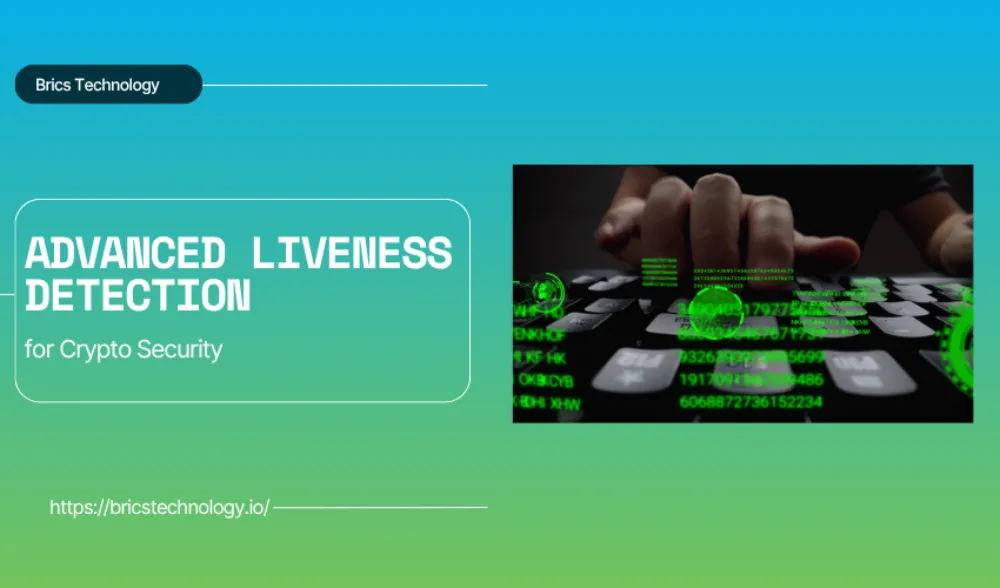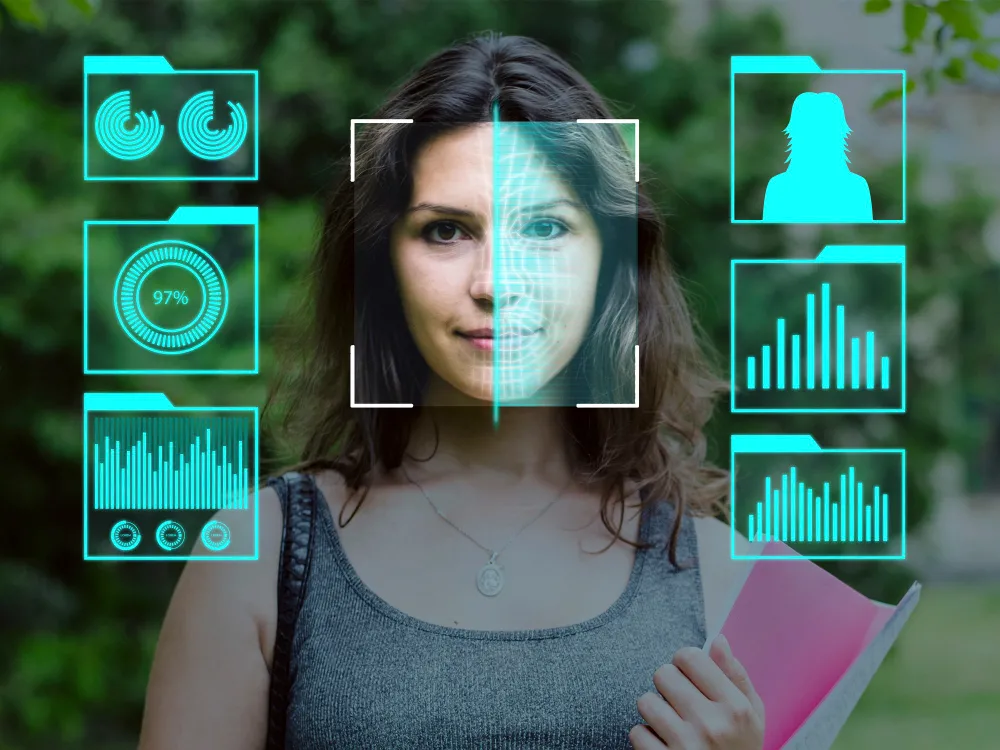Advanced Liveness Detection for Crypto Security

Online wallets, exchanges, and decentralized apps are common goals for hackers and identification thieves. That’s why liveness detection has grown to be a critical layer of safety within the crypto space.
Liveness detection allows systems to make certain that the character looking to get right of entry to a crypto wallet or change is a real, live human—not a photo, a video, or a deepfake. In simple terms, it functions like a security shield that checks whether you are actually present, rather than just pretending to be.
What is Liveness Detection?

Could you please explain what liveness detection is? It’s a technique that uses AI and laptop imagination and prescience to decide if a biometric sample—generally a face—is from a live character present at the time of verification and no longer from a spoofing method like a printed photo, video replay, or 3D mask.
For example, while you try to log in for your crypto wallet or install a brand new account on a trading app, the device may additionally ask you to take a selfie. But how does it realize it’s actually you and not someone else usingyour picture? That’s where face liveness detection comes in. It scans for clues like skin texture, eye motion, blinking, or even verbal lies to verify you are absolutely there.
How Face Liveness Detection Protects Crypto Users
Face liveness detection makes use of your facial information to verify you are bodily found in real time. Many banking apps and digital wallets already use this approach. Now, it’s becoming widespread in crypto structures too. When customers sign in or log in, the gadget may set them off for a liveness detection selfie. Behind the scenes, clever algorithms are checking for movement (like blinking or smiling), 3-D depth (to locate an actual face), and unique facial features. If the device detects something fake, entry to it is denied.
This protects users from not unusual fraud strategies like:
Using printed pictures to pass ID verification
Holding up a video of someone else’s face
Deepfakes created with AI software
Hijacked logins the usage of stolen selfie statistics
As more crypto exchanges circulate toward face-based identification verification, liveness detection generation guarantees that face recognition cannot be fooled without difficulty.
Types of Liveness Detection Technology in Crypto Platforms
There are one-of-a-kind kinds of liveness structures. The most not unusual ones are active liveness detection and passive liveness detection. Let’s smash them down sincerely.
Active liveness detection calls for the user to do something—like blink, nod, smile, or pass their head barely. These movements assist the gadget in recognizing the person is actually present.
For instance, a crypto app might ask, “Please flip your head to the left” or “Blink two times.” If the man or woman responds successfully, they pass the take a look at.
On the other hand, passive liveness detection doesn’t ask the user to move. Instead, it silently analyzes the picture or video using AI to identify signs of life, like subtle modifications in lighting, skin mirrored image, or eye behavior. This approach is faster and less invasive, but additionally more difficult to build as it should be.
Some crypto apps also use video liveness detection, in which users document a brief clip of themselves. The device then analyzes the entire video for several cues—such as voice, facial movement, and real-time consistency—to ensure security.
While all those techniques can be effective, many systems combine them for added security. This way, even if a fraud attempt fools one layer, the subsequent layer will detect it.
Benefits of Liveness Detection in Crypto Security

Crypto bills frequently preserve huge quantities of virtual property. Losing the right of entry due to fraud or identity robbery can suggest dropping actual money. That’s why liveness detection offers peace of mind to each customer and platform.
Here’s why it subjects:
First, it stops account takeovers. Even if a person steals your electronic mail, password, or maybe your ID picture, they cannot get into your account withoutpassing the liveness check.
Second, it guarantees only actual users are getting access to crypto services. This is critical for companies that need to comply with policies and avoid letting faux bills into their platforms.
Third, it allows for compliance. Many international locations now require crypto systems to follow strict KYC and AML (Anti-Money Laundering) rules. Using liveness detection during the sign-up or login process helps meet the requirements without lengthy wait times.
Finally, it builds consumer belief. When humans acknowledge that advanced AI equipment is safeguarding their account, they feel more secure while storing, buying, and selling their property.
Challenges of Implementing Liveness Detection
Although the liveness detection technology is robust, it presents several challenges.
Some customers worry about privateness, mainly once they’re asked to take selfies or films. Good platforms should simply explain how they save, use, and safeguard customer records.
Another assignment is device compatibility. Not all phones or laptops have first-rate cameras. These limitations can have an effect on the accuracy of liveness checks. Developers need to optimize the system for paintings across gadgets and net speeds.
Also, there’s the risk of fake positives and false negatives. Sometimes, an actual user is probably denied admission (fake negative), or a faux would possibly get through (fake positive). That’s why it’s important for systems like BRICS Technology to train their AI models with diverse data and continuously improve accuracy.
The Future of Liveness Detection in Crypto
The future of liveness detection in crypto looks promising. As technology evolves, the equipment designed to protect personal identification and financial information will also advance.
We’ll probably see greater systems, including AI-powered biometric systems, real-time fraud indicators, and quicker onboarding through liveness verification. Additionally, multi-factor authentication may soon include voice or palm scans, which will be combined with liveness detection to prevent spoofing.
As deepfakes and AI-generated fraud become increasingly prevalent, crypto structures will need to remain vigilant and adaptable. This approach continues to enhance the liveness detection technology to identify even the most advanced spoofing attempts.
Final Thoughts
The essence of cryptocurrency is to provide individuals with control over their finances. But with exceptional strength comes exquisite chance. As hackers and scammers turn out to be more advanced, so should the equipment we use to stop them. Liveness detection is no longer non-obligatory—it’s a key part of crypto safety.
Whether it is through face liveness detection, active liveness detection, or video liveness detection, this technology enables us to ensure that only legitimate individuals gain access to crypto services—not bots, not impostors, and not scammers.
Platforms like BRICS Technology are leading the way with the aid of using superior liveness detection generation to preserve customers secure and stable. And as the crypto world continues to develop, clever protection like this can make all the difference.
Catagories
Recent Post
- From Biometrics to Blockchain: Reinventing Identity Verification
- From Idea to Income: How to Build and Sell AI Soulmates
- Supporting Employee Wellbeing in the UK: What Businesses Often Overlook
- The Role of AI Development Companies in Enhancing Security for Brics Coin Transactions
- Designing Smart Cancellation Flows: Best Practices for SaaS
